Submitted by WA Contents
MVRDV releases a publication on what will happen if the Netherlands is submerged underwater
Netherlands Architecture News - Jul 15, 2024 - 15:11 4636 views
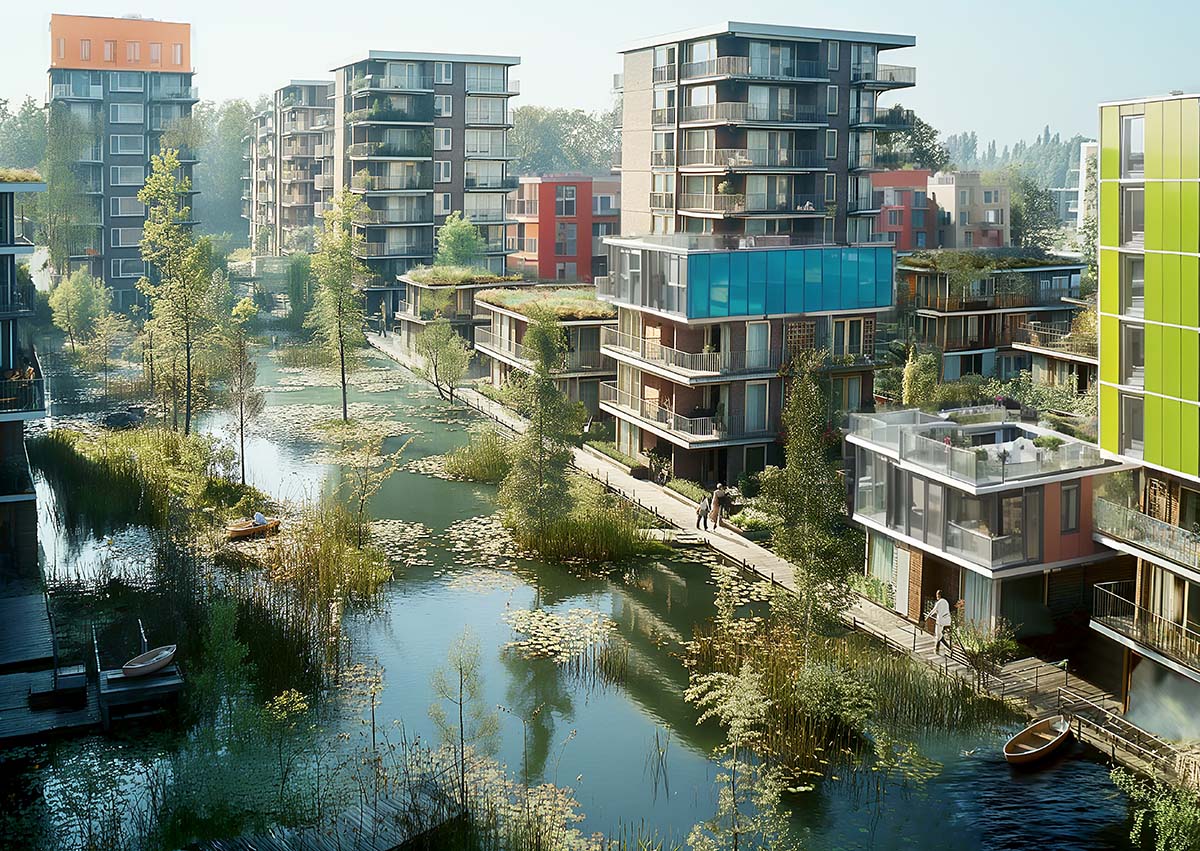
MVRDV has released a publication on what will happen if the Netherlands is submerged underwater. Titled WHAT-IF: Nederland 2100, the studio gives an overlook to 21st-century dilemmas.
What happens when the impossibility of Dutch society meets the certainty of problems like population shifts or climate change? Will the Netherlands disappear in the twenty-first century? Or could the nation be led through even the worst-case scenarios by novel, ever-more-radical solutions?, are among the questions that MVRDV brings into the stage.

Sand City, Hyper dense
Three urban design and landscape studios, MVRDV, IMOSS, and Feddes/Olthof, have collaborated on the publication WHAT-IF: Nederland 2100 to explore the challenging scenarios that the nation will probably have to make in the next century.
Visions illustrating how the Netherlands can learn to coexist with nature, provide housing and a high standard of living, safeguard its cultural heritage, and adjust its economy to a new normal are presented in the 56-page study (in Dutch).
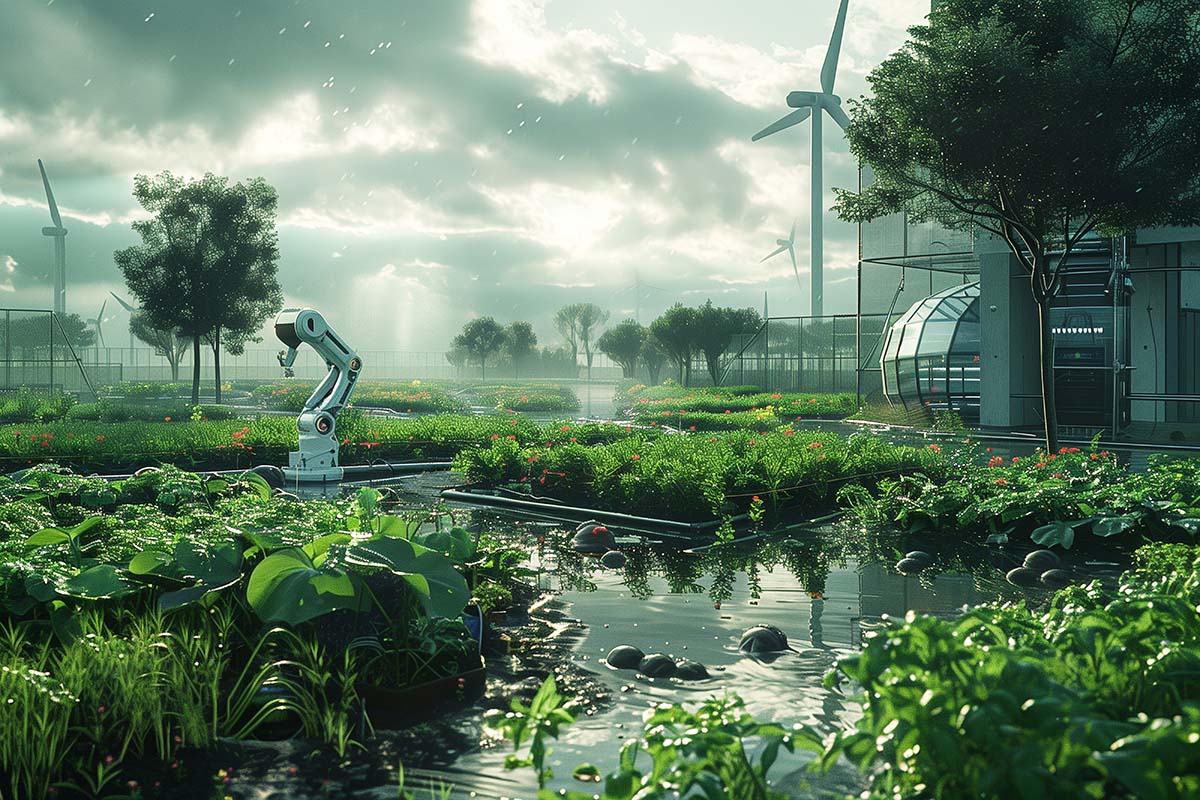
Waterlogged City, Productive landscape
The study, which was released by Platform Ontwerp NL in association with the Dutch Ministry of the Interior and Kingdom Relations' ("Programma Mooi Nederland") Beautiful Netherlands Program, aims to make the future predictable for a wide audience and outline the steps required to reach the future.
"This effort is not simply an academic exercise: with an incoming Dutch government that will likely introduce new spatial planning policies, WHAT-IF: Nederland 2100 provides material for social debate and political choices that could have serious real-life consequences," said MVRDV.
"Beyond the specific context of the Netherlands, the study has relevance for over 900 million people worldwide who live in low-lying coastal areas that are threatened by climate change," the firm added.
The decision matrix, or "mixing deck" for potential future scenarios, was created by MVRDV as a foundation for the work of all three studios. It introduces sliding scales for a range of spatial planning considerations, from the intensity of population growth and global warming to the methods for addressing sea level rise (ranging from technological to nature-based approaches), and from the political environment to the distribution of housing, nature, industry, housing, and other functions.
This decision matrix provides an explanation for each of the suggested visions by helping to define a logical storyline for a hypothetical future.
It was decided to look into the most extreme case for each of the three studios: the maximum amount of population growth and the maximum amount of predicted global warming. Assuming that these scenarios would also require a shift in how water is dealt with, the idea was that Dutch society would eventually give up fighting the sea's encroaching waters.

Sand City, Vertical farming
The landscape would adapt to suit people's lifestyles rather than the other way around, as is the case now. The studios were able to show that even the most difficult circumstances can be overcome if brave decisions are made well in advance of the situation.
The Netherlands' low-lying western regions, which are currently home to the majority of the population and the largest cities in the nation, would no longer be protected from the sea due to the drastic rise in sea levels and the new attitude toward water. There would unavoidably be "water-logged cities" in the west and higher, drier "sand cities" in the east of the nation.
In the decision matrix, MVRDV established two complementary combinations in light of this hydrological divide. The east's sand cities grow extremely dense, with high intensity land uses everywhere.
These cities will have to accommodate the majority of population growth and economic activity, in contrast to the current situation. There will be usable green space on top of every roof, residential areas will be redeveloped for maximum density, agriculture will be stacked into vertical farms, and green belts surrounding the cities will provide buffer zones for rainwater collection and the production of bio-based materials.
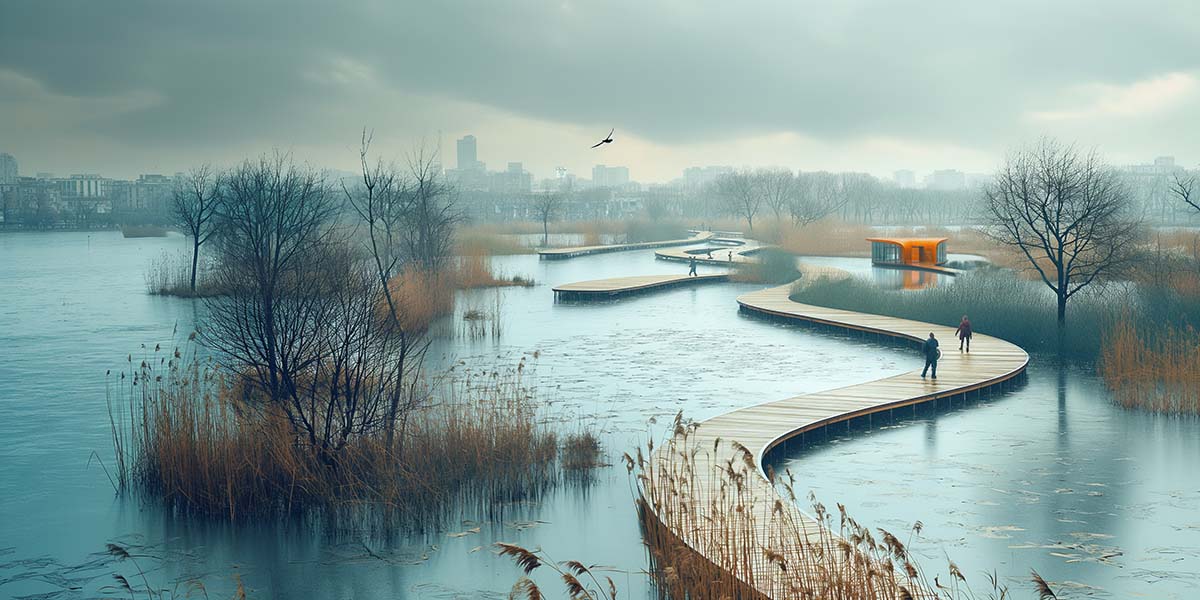
Waterlogged city, Nature
In the meantime, the west's flooded cities might follow an entirely different course, with flooding bringing about a necessary shift in reality. Large raised dikes would encircle the historic centers of cities like Amsterdam to protect significant heritage buildings. Therefore, structures that have endured centuries below sea level would continue to be protected; however, it does not appear that everything could be saved in this manner.
The postwar neighborhoods outside these dikes will adjust to a new way of life coexisting peacefully with the water. The housing that was flooded will be made up for by adding rooftop extensions to the ground floors, and a new system of walkways connecting the buildings will be at "ground" level.
Huge swaths of the natural delta landscape will be used primarily for the production of bio-based materials, with traditional agriculture and industry taking the place of these neighborhoods. Boats and other small-scale water transportation will become the standard means of transportation. Though not everything will be small-scale, the flooded cities become pioneers in resilience and adaptation in harmony with nature, with a cutting-edge intercity transit system integrated into the massive protective dikes.

Waterlogged city, Nature
"We could make farms in towers if we wanted to"
"What we hope to communicate in this study is an idea of what’s possible," said MVRDVfounding partner Winy Maas. "It might seem hard to imagine right now, but we could live in a flooded landscape if we have to."
"We could make farms in towers if we wanted to. We could turn Enschede into the most populated city in the Netherlands if we wanted to."
"What we can’t do is continue with the status quo, building in ways we know are not sustainable, not resilient, not flexible, in a country that is largely below sea level. Right now, we need a total switch in our understanding of what seems normal and sensible, and what seems foolish and untenable," Maas added.

Matrix diagram
WHAT-IF: Nederland 2100 was commissioned by Platform Ontwerp NL, an advocacy platform made up of a collaboration between the Dutch professional organisations for architects (BNA), engineers (Koninklijke Nederlandse Ingenieurs), urban planners (BNSP), landscape architects (NVTL), and interior designers (BNI), along with the Federation of Spatial Quality and the Deltametropolis Association.
MVRDV stated that the study was presented on June 3rd to Irene Jansen, Director of Space and Living Environment at the Ministry of the Interior and Kingdom Relations.

Future Netherlands

Matrix, Path through the matrix
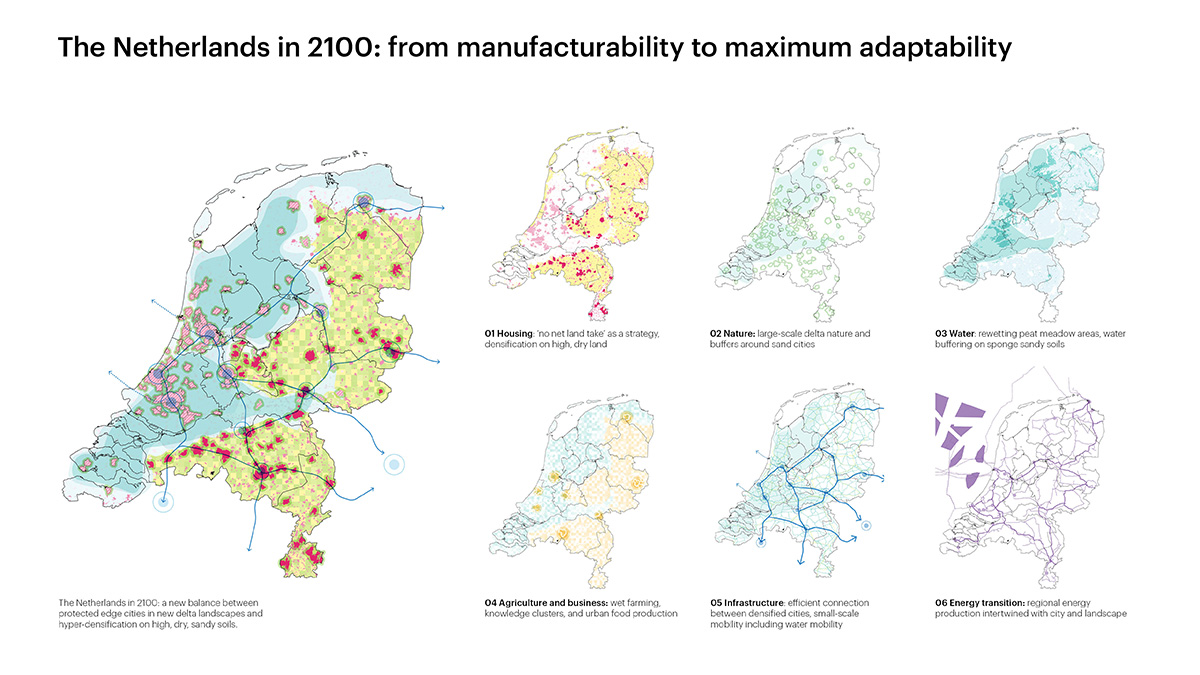
MVRDV Scenario
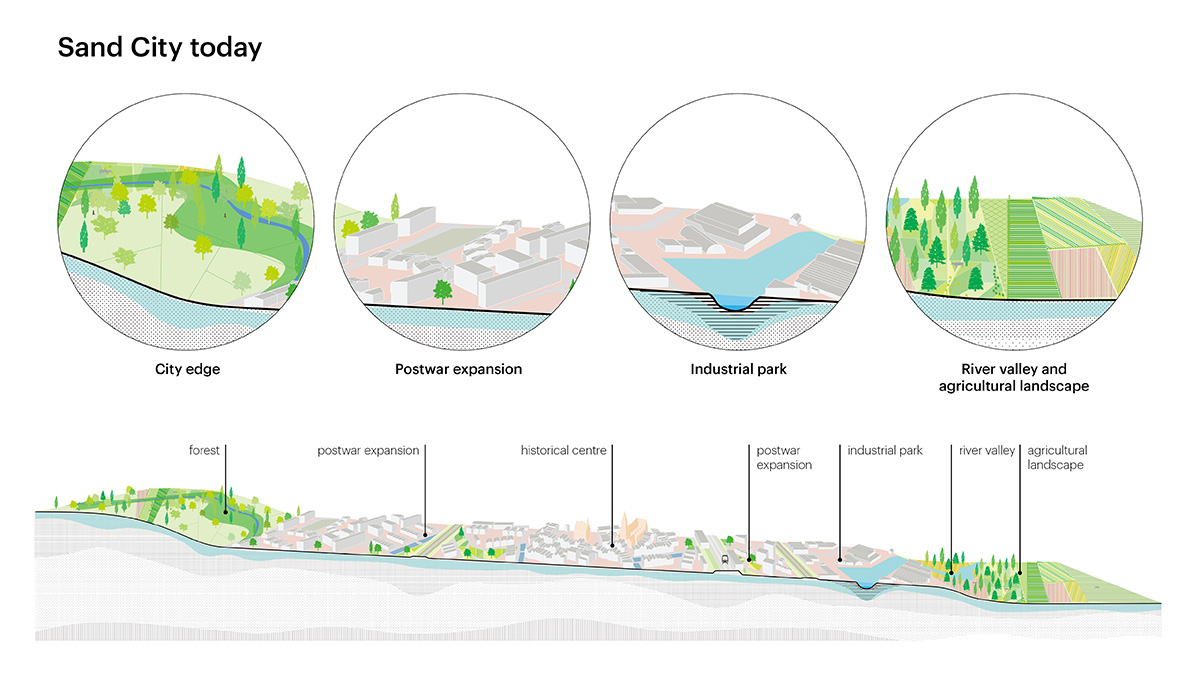
Sand City today

Sand City in 2100
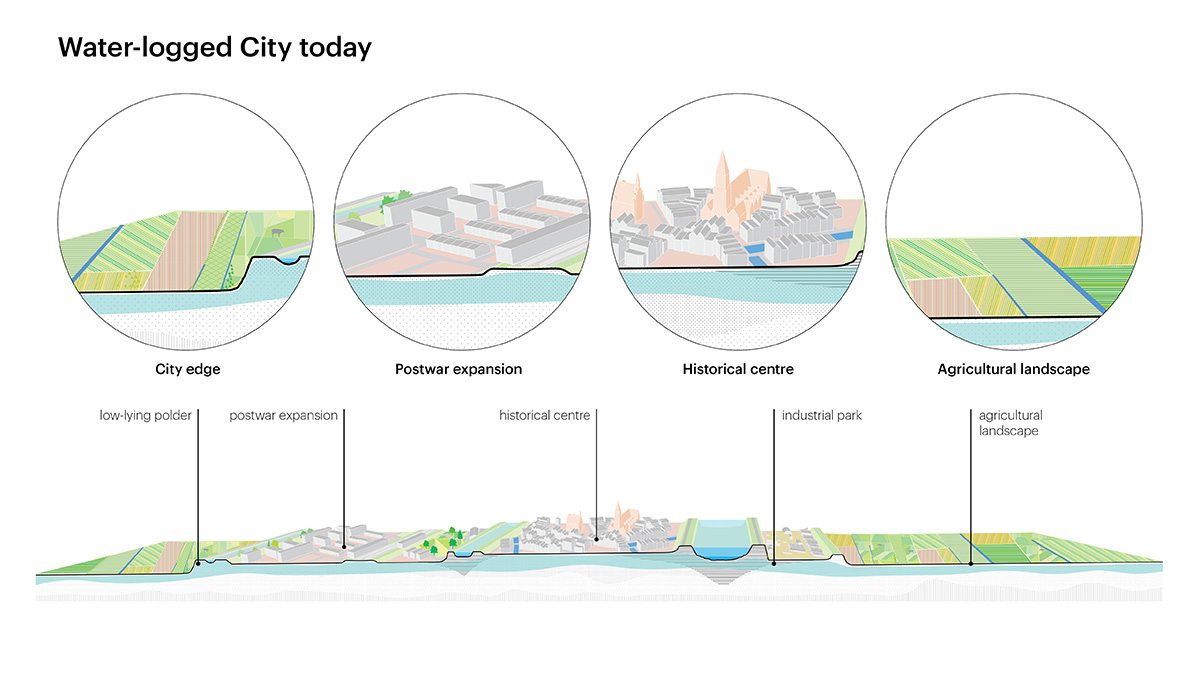
Water-logged city today
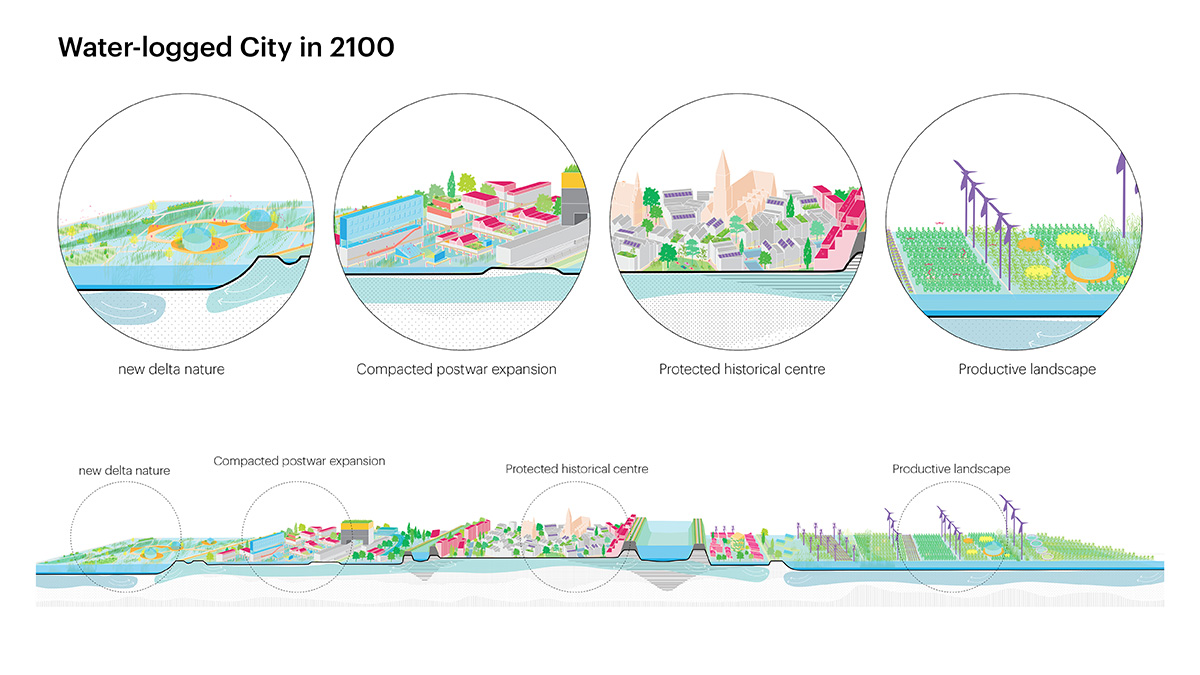
Water-logged city in 2100
Project facts
Project Name: WHAT-IF: Nederland 2100
Location: The Netherlands
Year: 2023-2024
Client: Platform Ontwerp NL
Programme: Speculative vision document
Architect: MVRDV
Founding Partner in charge: Winy Maas
Design Team: Stephan Boon, Stijn Lanters, Sanne van Manen, Kima Boudouaya, Anna Zoia, Xiaochun Sheng, Sherry Aine Te.
Partners
Additional contributing designers: IMOSS, Feddes/Olthof
Subsidy: Ministry of the Interior and Kingdom Relations (BZK), Programma Mooi Nederland
Platform Ontwerp NL member organisations: Royal Institute of Dutch Architects (BNA), Koninklijke Nederlandse Ingenieurs, Professional Association of Dutch Urbanists and Planners (BNSP), Federatie Ruimtelijke Kwaliteit, Dutch Society for Garden and Landscape Architecture (NVTL), Association Deltametropool, Professional Association of Dutch Interior Architects (BNI).
All images © MVRDV.
> via MVRDV
